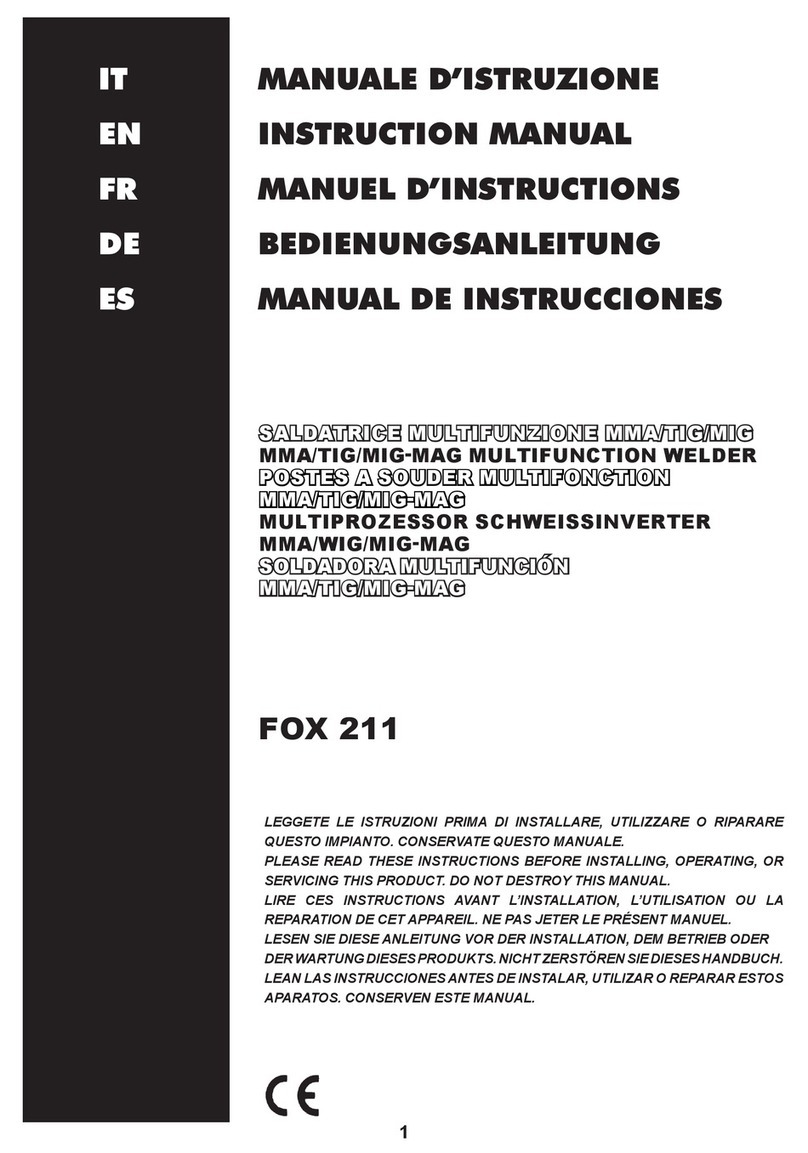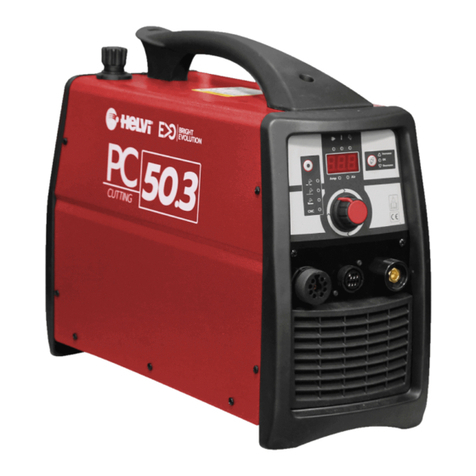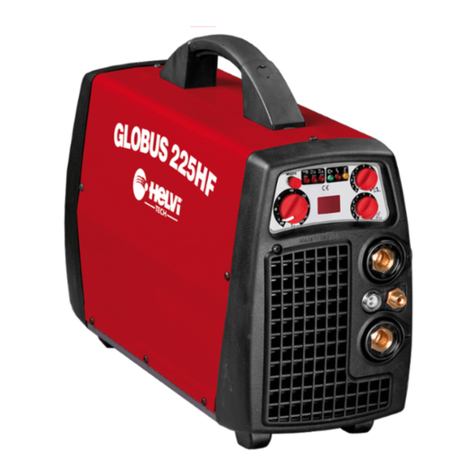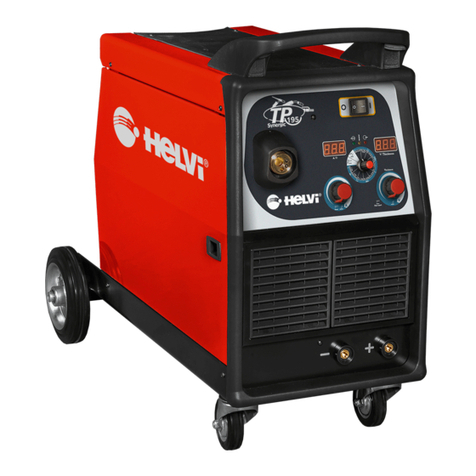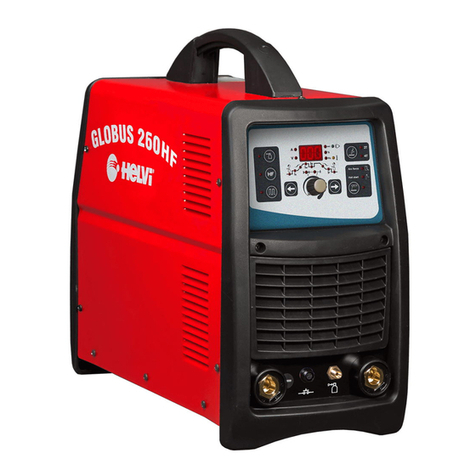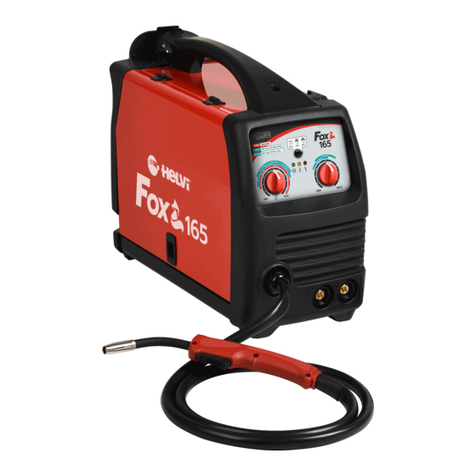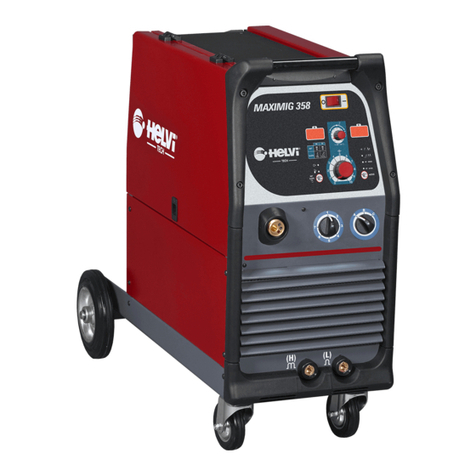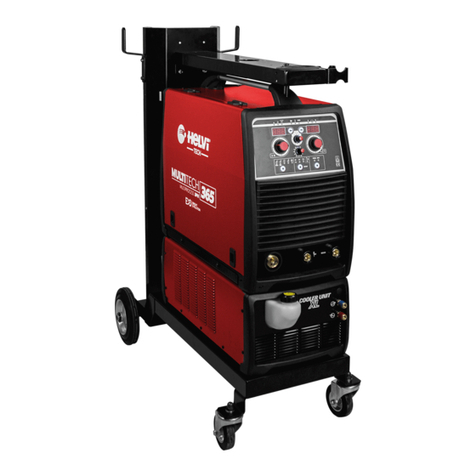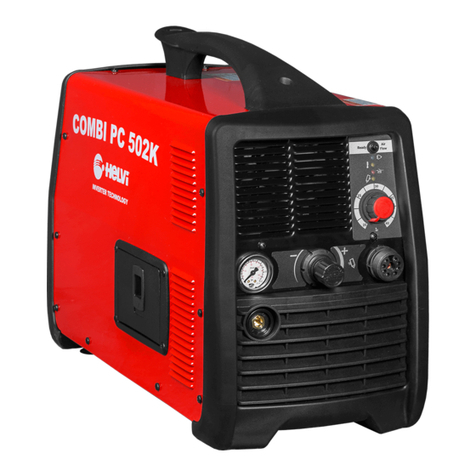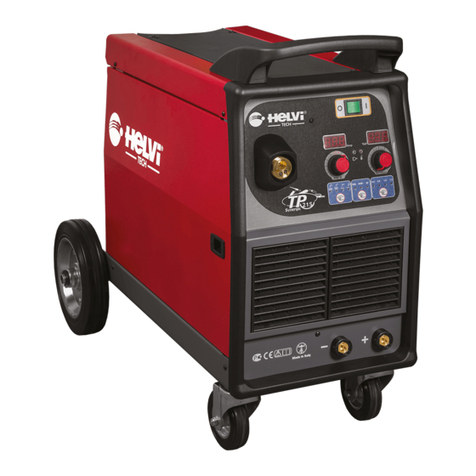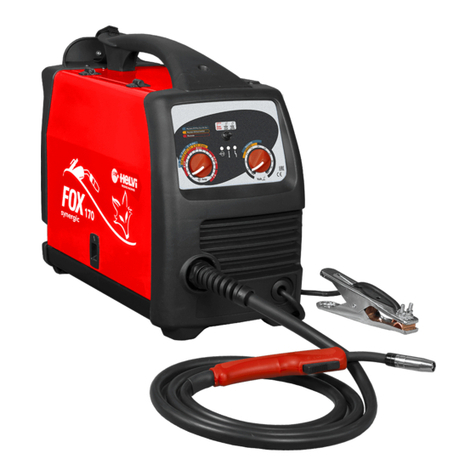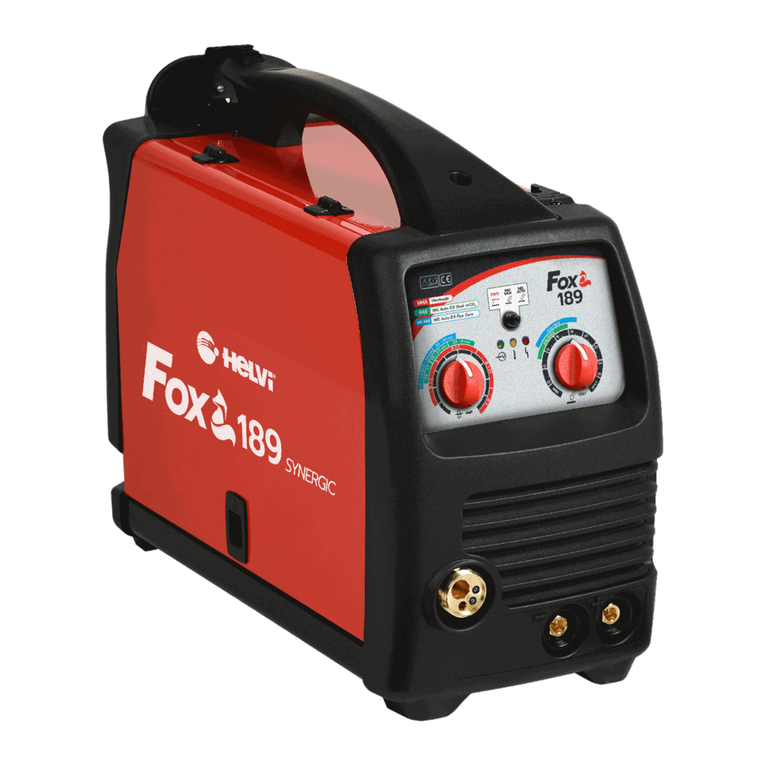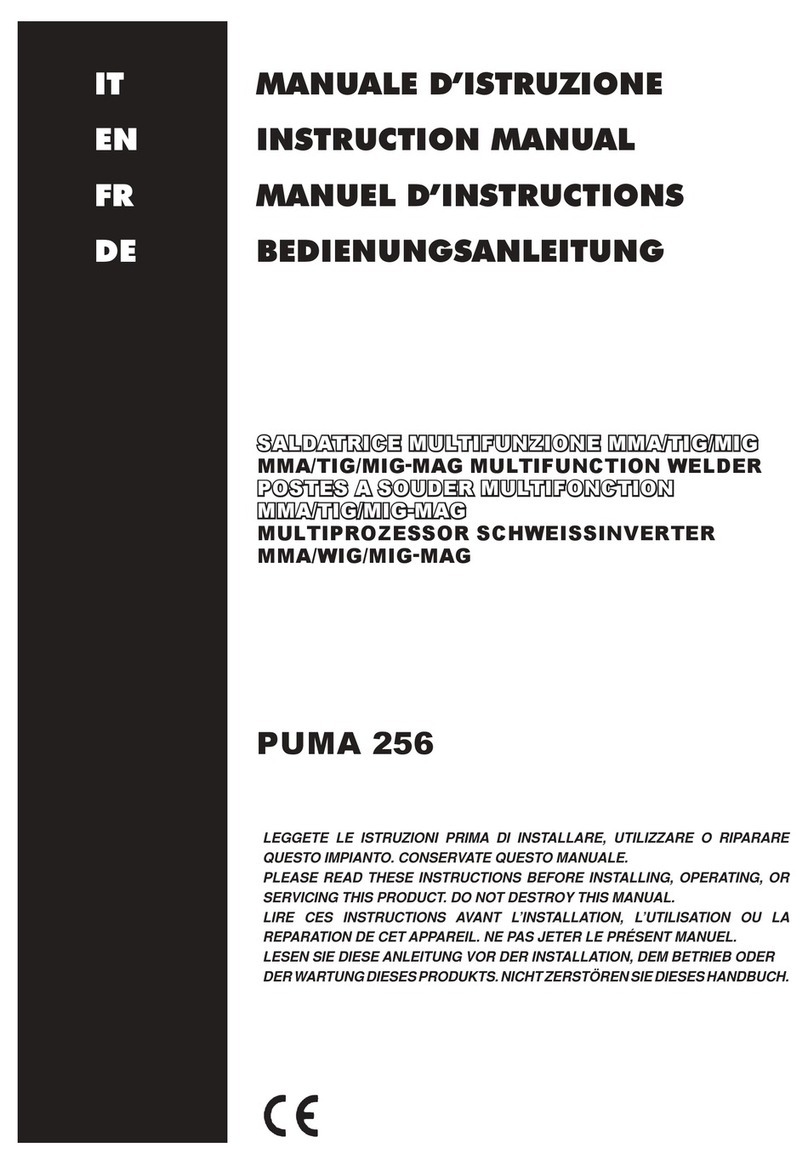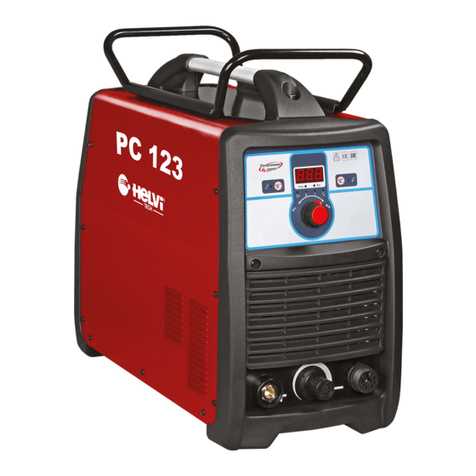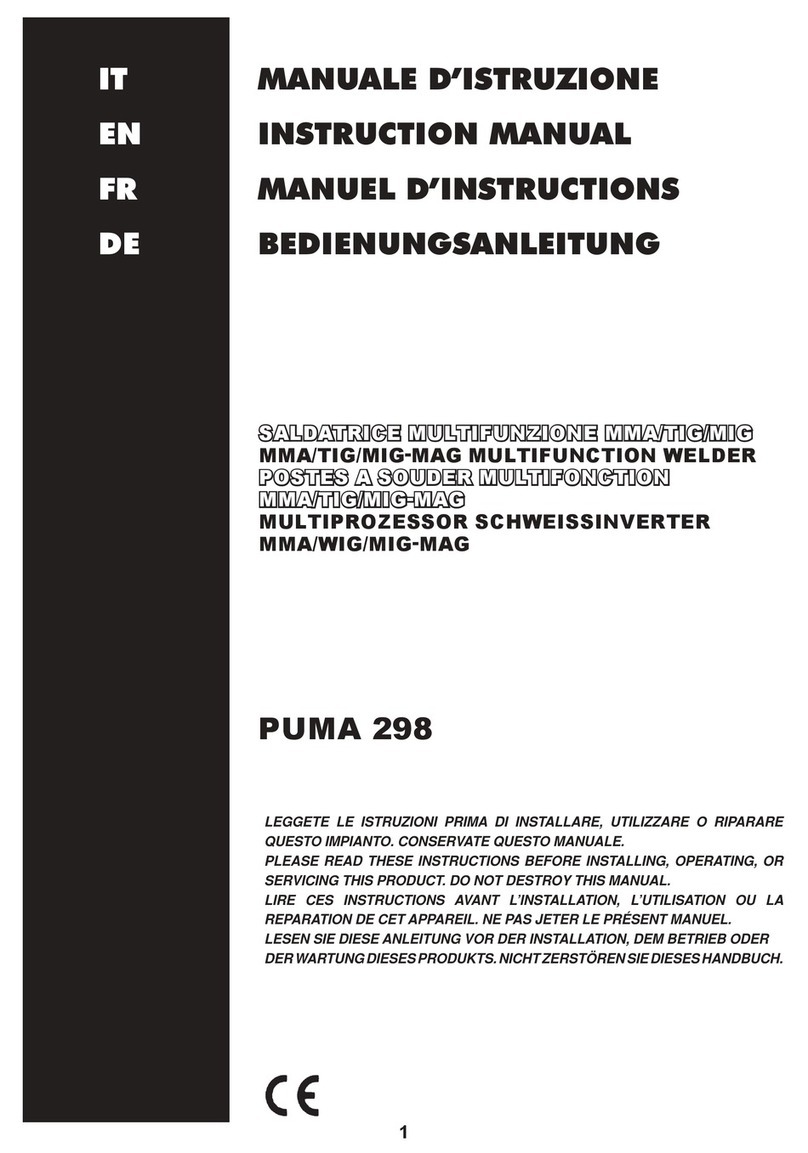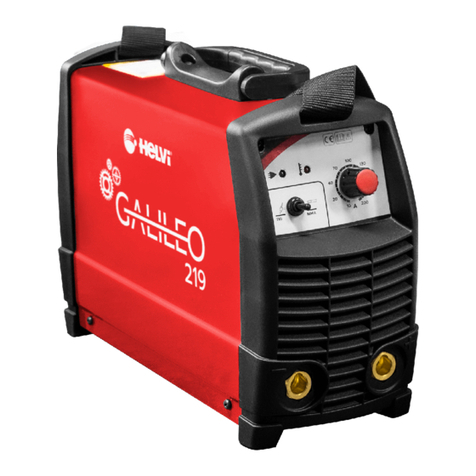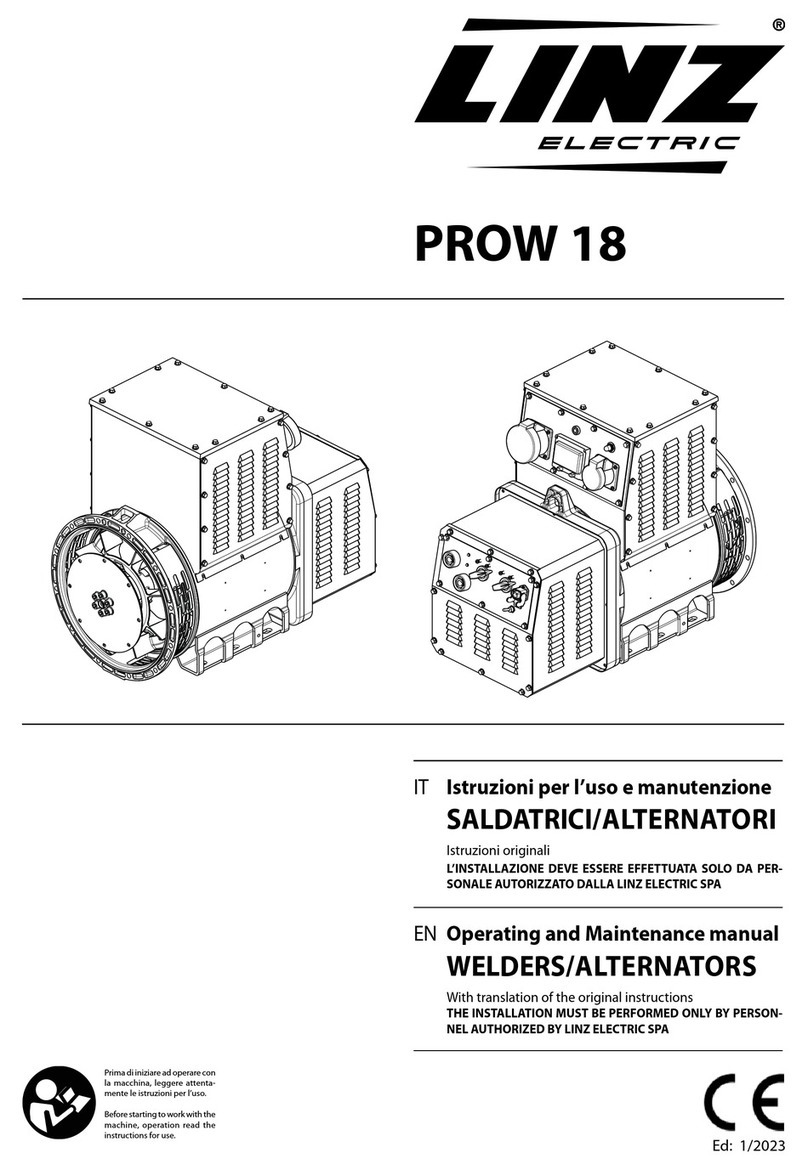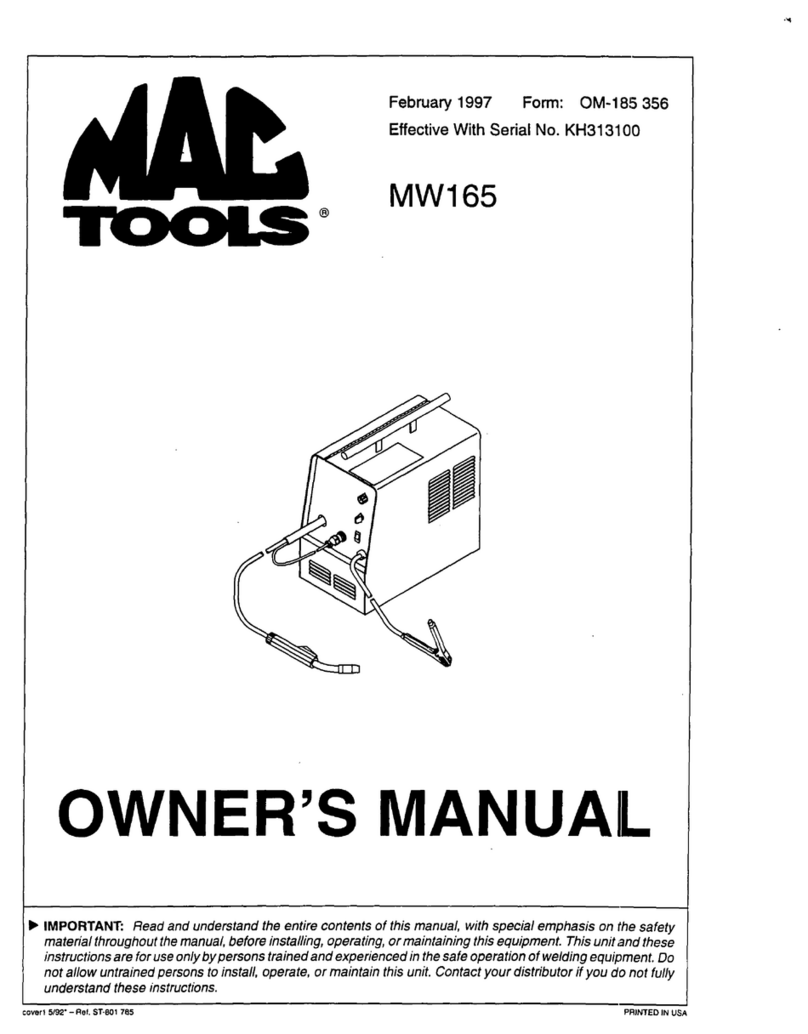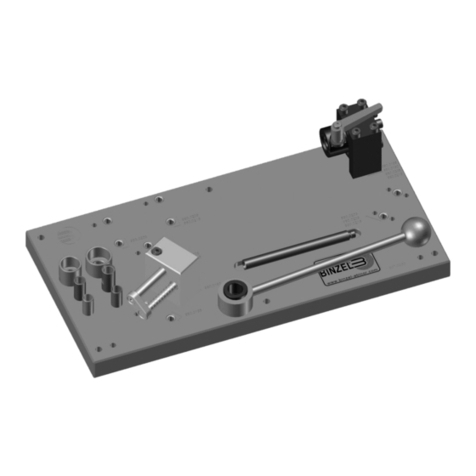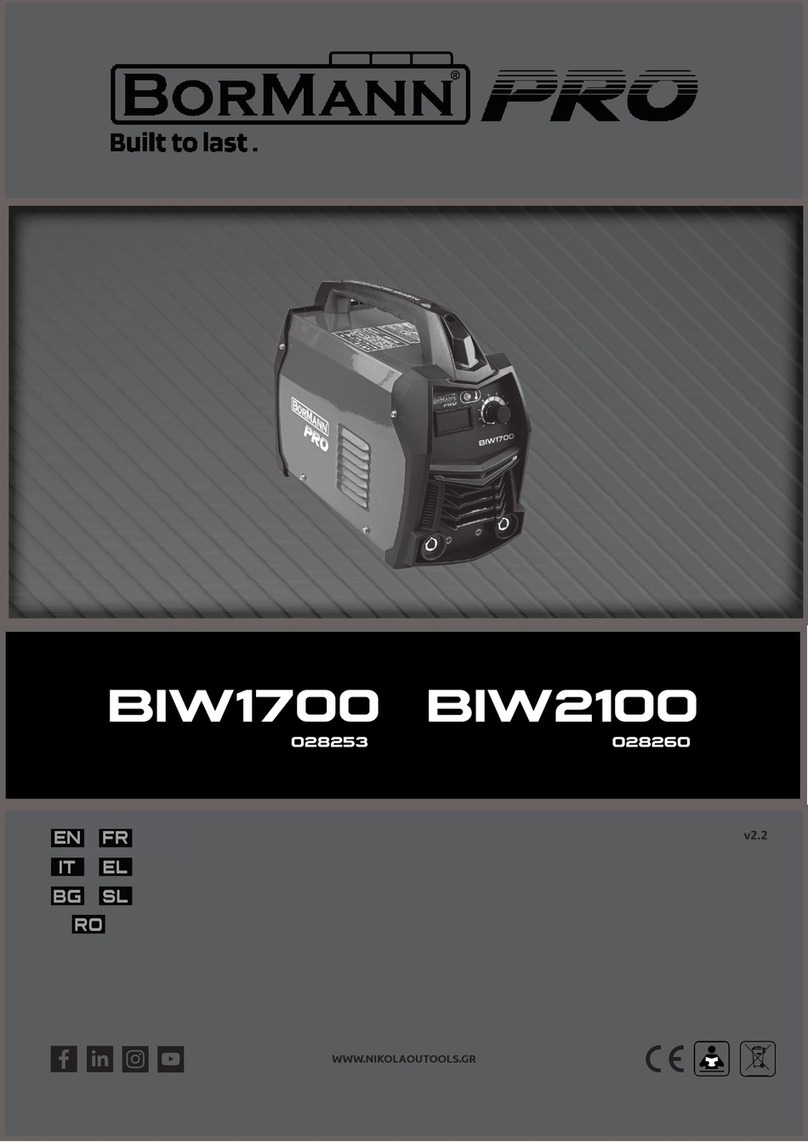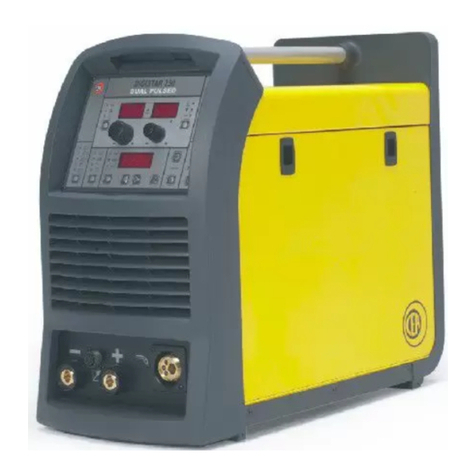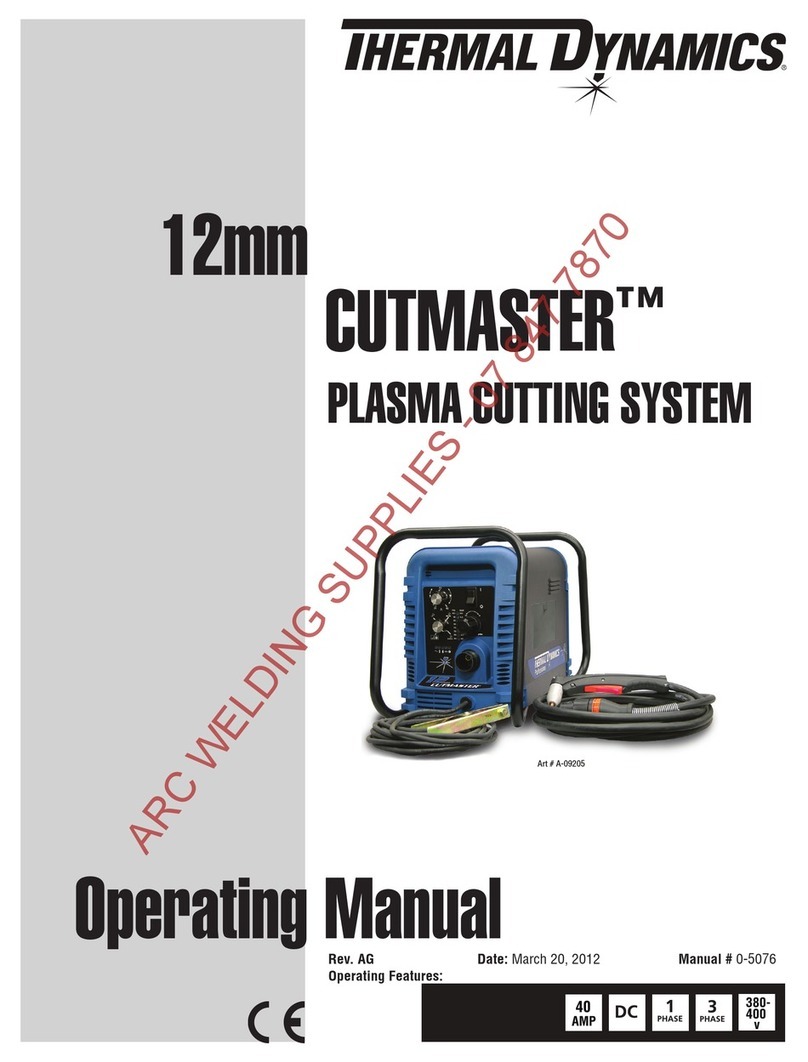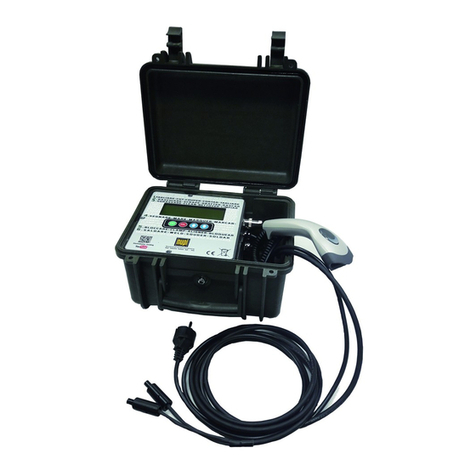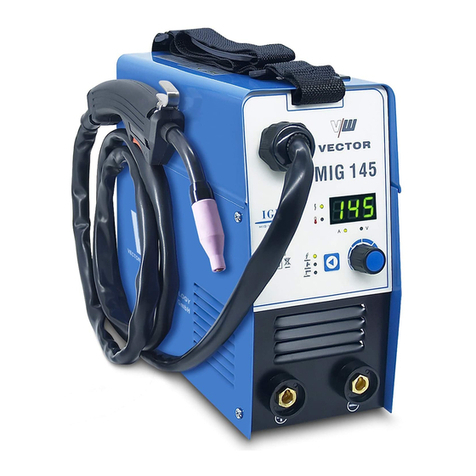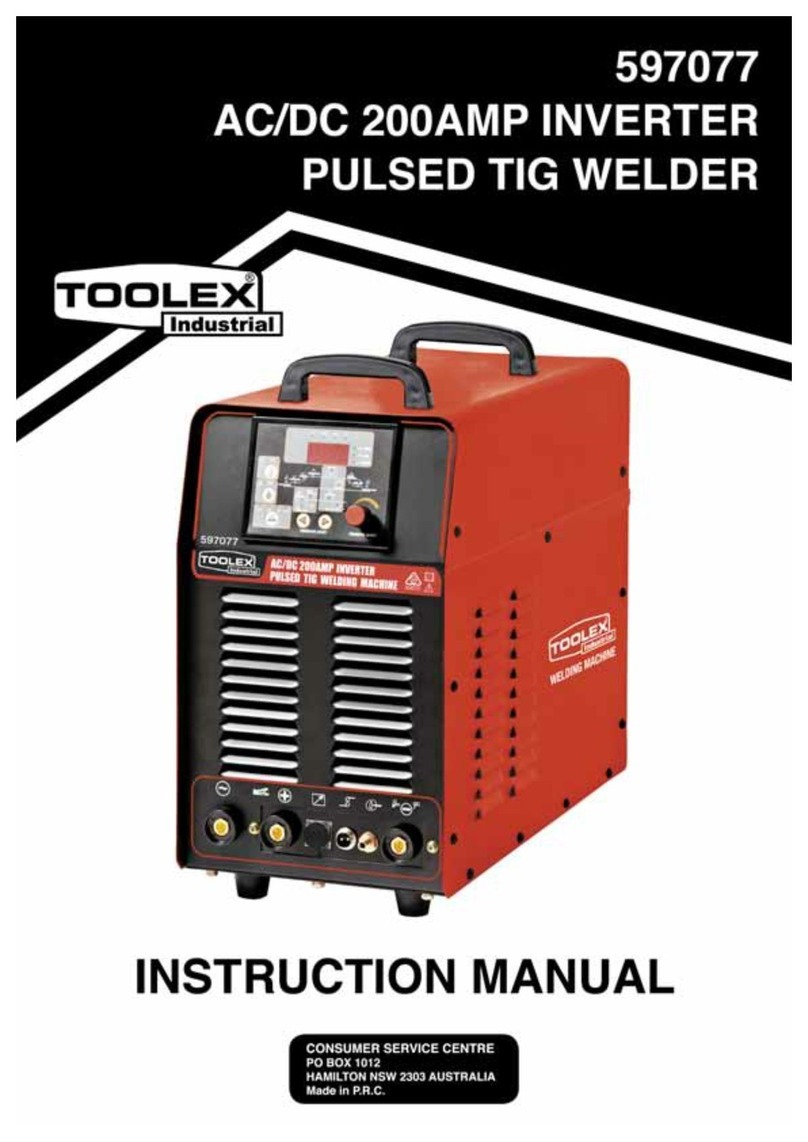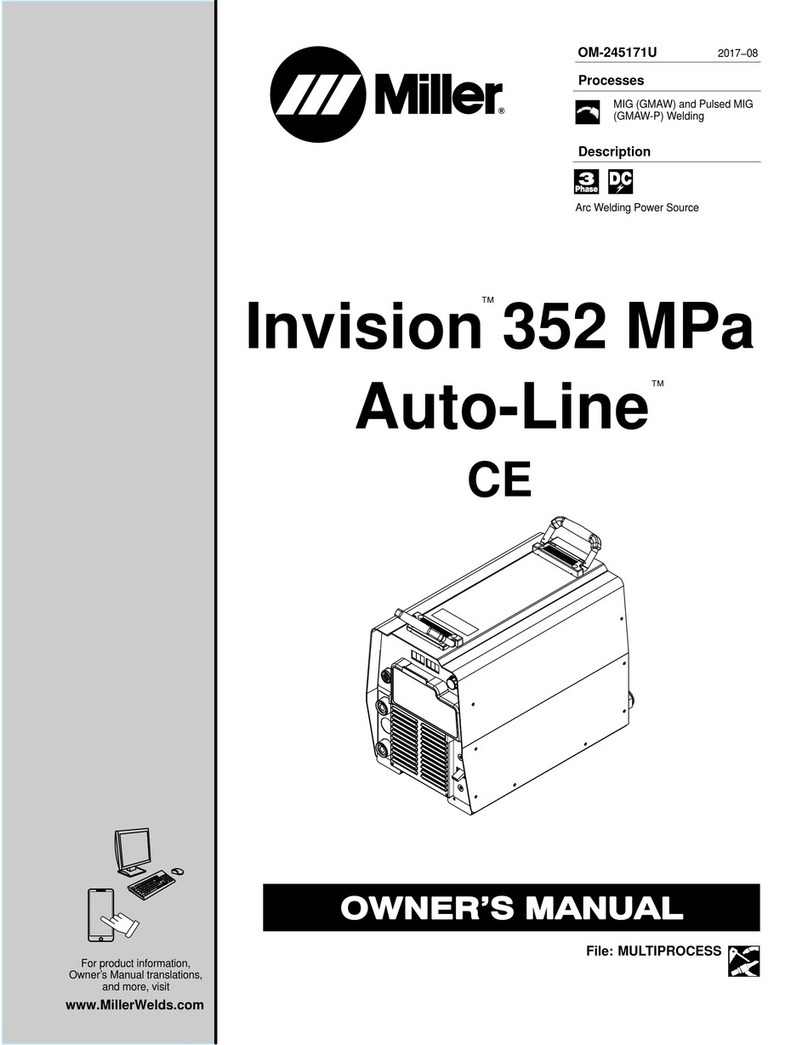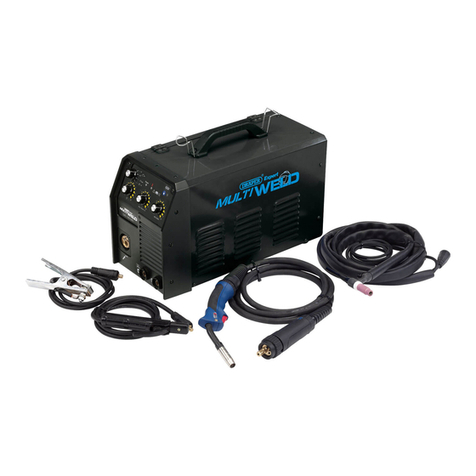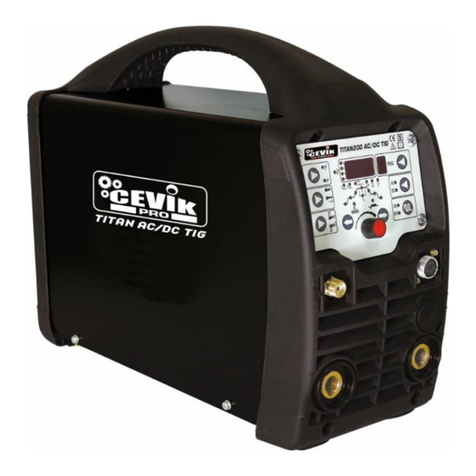
9
5- Check the immunity of any other equipment operating in the same environment.
In certain cases additional protective measures may be required.
Interference can be reduced in the following ways:
1- If there is interference in the power supply line, an E.M.C. filter should be
inserted between the mains and the unit.
2- The output cables of the unit should be shortened; these should be kept close
together and stretched along the ground.
3- All the panels of the unit should be correctly closed after carrying out
maintenance.
2.8 Medical and first aid treatment
First aid facilities and a qualified first aid person should be available for each shift
forimmediatetreatment of electricalshockvictims.Amedical facilityshouldbe close
by for immediate treatment of flash burns of the eye and skin burns.
EMERGENCY FIRST AID:
Call physician and ambulance immediately.
Use First Aid techniques recommended by The Red Cross.
DANGER: ELECTRIC SHOCK CAN BE FATAL
If person is unconscious and electric shock is suspected , do not touch the
person if he or she is in contact with welding equipment, or other live electrical
parts. Disconnect (open) power at wall switch and then use FirstAid. Dry wood,
wooden broom, or other insulating material can be used to move
cables, if necessary, away from the person.
2.5 Shielding gas
Use the correct shielding gas for the welding process. Be sure that the regulator/
flowmeter mounted on the cylinder is working well.
Remember to keep away the cylinder from any source of heat.
2.6 Permitted noise levels 86/188/EEC Rule.
Under normal circumstances the equipment used for electric arc welding does
not exceed the permitted 80 dBA. However in certain conditions eg. high welding
parameters in confined spaces, noise levels may exceed the permitted level. For this
reason it is strongly recommended that operatives wear appropriate ear protection.
2.7 Electromagnetic compatibility.
Before installing the STICK/TIG welding unit, carry out an inspection of the
surrounding area, observing the following guidelines:
1- Make sure that there are no other power supply cables, control lines, telephone
leads or other equipment near the unit.
2- Make sure that there are no radio receivers or television appliances.
3- Make sure there are no computers or other control systems.
4- Make sure that there is no-one with a pacemaker or hearing aid in the area
around the unit.






















